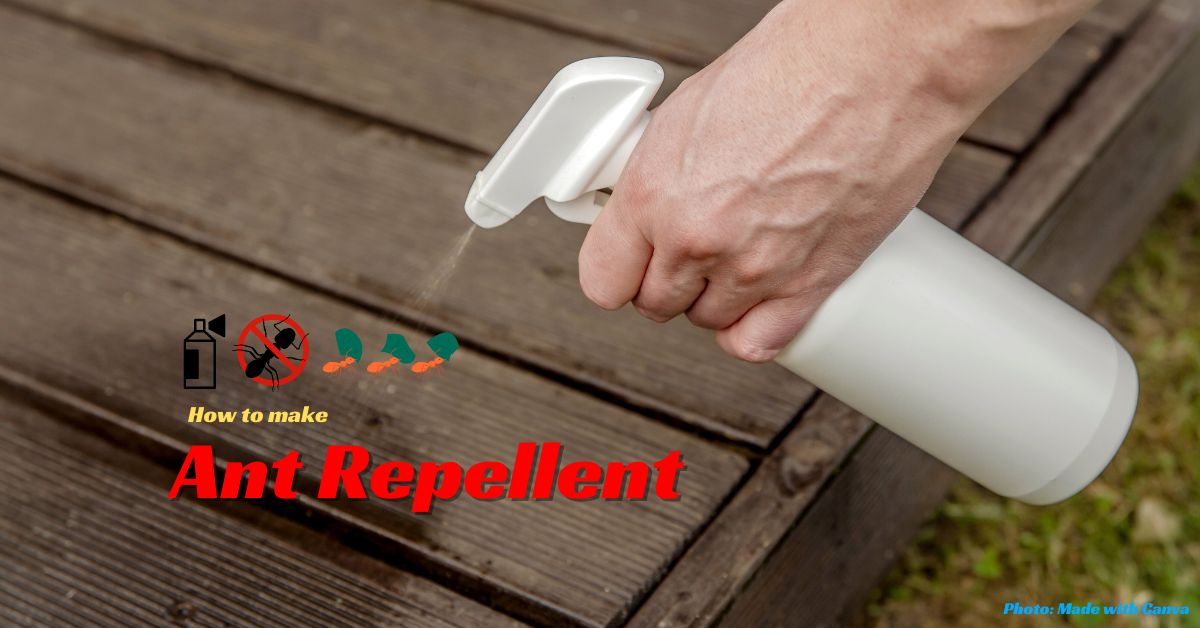Tired of ants taking over your kitchen counter? You don’t have to resort to harsh chemicals. There are several effective and natural ant repellent you can make at home with common household ingredients!
Dealing with ants invading your home can be frustrating. Commercial ant repellents often contain chemicals that you may not want to use around your family and pets. Luckily, there are natural and effective alternatives you can make at home to keep ants at bay.
In this DIY guide, we’ll explore simple methods to create your own ant repellent using common household ingredients. Let’s make 10+ ant repellent in the most easiest way.
Number 1: Make Ant Repellent with White Vinegar + Liquid Dish Soap + Baking Soda + Water

Mixing white vinegar, liquid dish soap, and baking soda with water becomes an effective natural ant repellent spray. These elements are easily found at your kitchen. So, you can make the ant repellent easily at home.
Ingredients:
1. Apple Cider Vinegar: 2 Cups
2. Liquid Dish Soap: 2 Tablespoons
3. Baking Soda: 2 Tablespoons
4. Water: As neededStep-by-step Process to Make Ant Repellent at Home
Step 1:
For a quick cleaning solution, mix vinegar, dish soap, and baking soda in a big bowl. Stir it carefully, then pour it into a heavy-duty spray bottle. Top up the bottle with water as needed.
Step 2:
Mix this ant repellent spray over the sink. Heads up, this mixture will foam a lot when you add baking soda to vinegar! To avoid overflow, add the ingredients slowly, allowing the foam to settle before adding more.
Step 3:
Use large industrial spray bottles as they are more durable than cheap plastic bottles. Just remember to let the foam settle completely before tightening the bottle’s lid.
How to Spray the Ant Repellent?
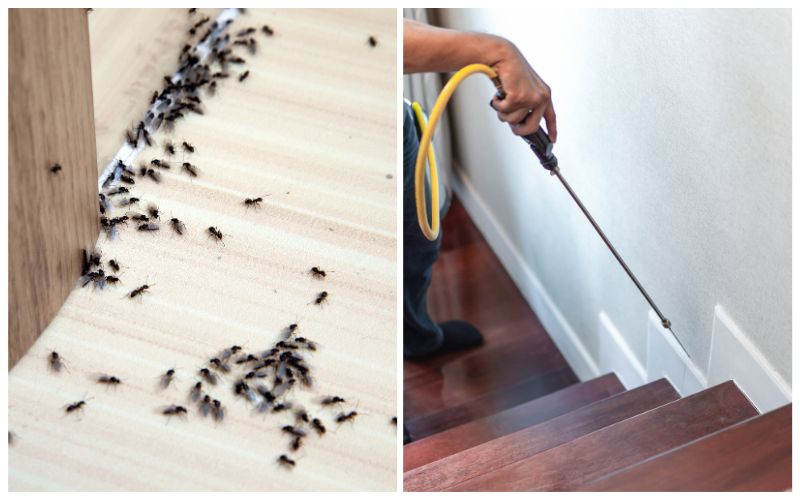
Target the Ants and Their Paths:
- Shake the spray bottle well.
- Directly spray any visible ants, along with their trails and the surrounding area.
- Let the solution sit for a few minutes to work its magic.
- Wipe the treated area clean with a damp cloth.
Block Ant’s Entry Points:
- Pay close attention to cracks in floors, windowsills, and other potential entry points for the ants.
- Spray these areas liberally to deter them from entering.
- You can leave the spray on entry points without wiping them clean, creating a barrier.
🔴Remember, a clean environment discourages ants. Regularly clean up crumbs, spills, and any other food sources that might be attracting them.
Number 2: Make Ant Repellent with Dish Soap + Water
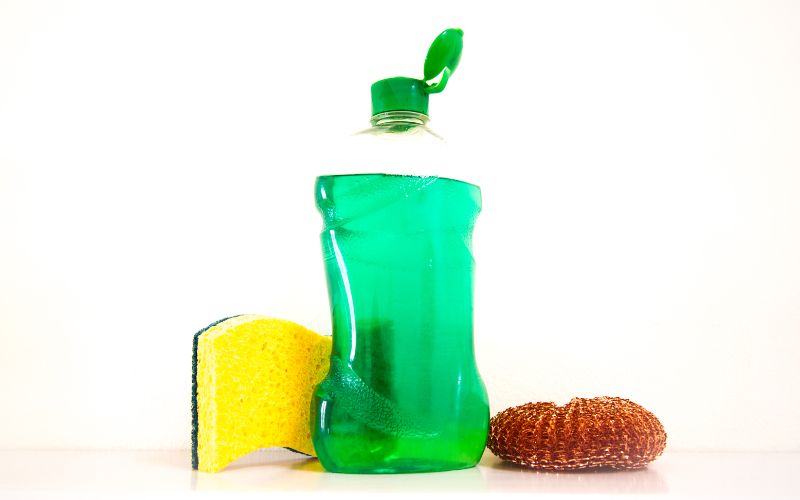
Tired of ants? Dish soap, your trusty kitchen companion, can also be a helpful ant repellent. Here’s how to make a quick and easy solution with just dish soap and water.
Ingredients:
1. Dish Soap: 2 Ounces
2. Water:32 OuncesFirst, take spray bottle. Then mix 2 ounces of dish soap with 32 ounces of water. Shake them properly to make a fine solutions.
When you are satisfied with the mixture, spray wherever you think the ants will come.
🔴Remember, usually, the ants keep a trail called pheromone when they go to food source. Pheromones help other ant members of the colony reach to the food source and return to the nest again.
So, use the spray to remove ant’s pheromone. It will work.
Number 3: Make Ant Repellent with Baking Soda + Boric Acid
Let’s create a homemade ant trap! Here’s what you’ll need:
Ingredients:
1. Sugar: 1 cup
2. Water: 1/2 cup
3. Boric acid: 2 tablespoons
4. Small plastic container with a lidFirst, mix the ingredients well in the container. Make sure everything is well combined.
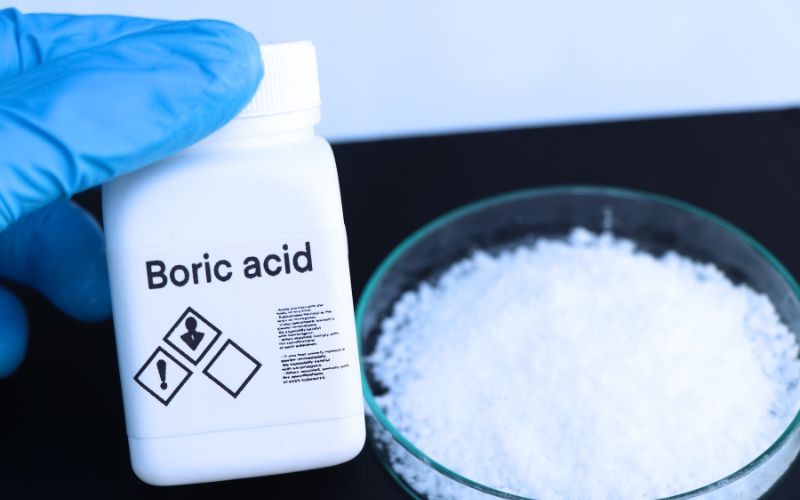
You can add a little baking soda to the trap to make it more attractive to ants. Although it might sound strange, baking soda actually helps mask the scent of the bait, making it even more inviting to them.
Once you’ve mixed everything, set up your trap. Carefully poke a few small holes in the lid of the container using scissors or a knife. These holes will be the entry points for the ants.
Put the trap wherever you see ants. They’ll be drawn to the bait and enter the trap.
Number 4: Make Ant Repellent with Baking Soda + Sugar
This ant trap uses a clever trick to lure ants with their favorite food: sugar! Here’s what you’ll need:
- Equal parts confectioners’ sugar and baking soda (mixing them in a cup works well).
- A touch of extra sweetness (honey, jam, or another sugary spread) – this is the key to really attracting the ants.
The key ingredient is confectioners’ sugar, because regular sugar is too easy for ants to separate from the baking soda. By mixing in some sugary bait, you create a more tempting trap.
Number 5: Ground Pepper as an Ant Repellent
Ground pepper can be an effective ant repellent. Ants dislike the strong smell of black pepper, and it can irritate their feet. This can deter them from entering your home or yard.

Here are some ways to use ground pepper as an ant repellent:
- Sprinkle ground pepper around entry points into your home, such as doorways, windows, and cracks in the foundation. You can also sprinkle it around areas where you’ve seen ants trailing.
- Create a pepper spray by mixing ground pepper with water in a spray bottle. Spray this mixture directly on ant trails or around the entrance to their nest.
- Make a barrier around your property by sprinkling a line of ground pepper around the perimeter. This can help to prevent ants from entering your yard in the first place.
Here are some things to keep in mind when using ground pepper as an ant repellent:
- Ground pepper is not a long-term solution. The ants may eventually find another way into your home or yard. You may need to reapply the pepper regularly.
- Ground pepper can be messy and may irritate your skin or eyes. Be sure to wear gloves when handling it.
- Ground pepper is not effective against all ant species.
Number 6: Lemon Juice as an Ant Repellent
Here’s how to use lemon juice for ant repelling:
- Make a spray: Mix one part lemon juice with three parts water in a spray bottle. Apply it around entry points like doorways, windows, and cracks in the wall.
- Lemon peels: Place lemon peels near ant trails or areas they frequent. The peels will emit the same disruptive scent.
Lemon juice can be a somewhat effective repellent for ants, but it’s important to know its limitations:
- The main benefit is that the citric acid in lemon juice disrupts the pheromone trails ants use to communicate and navigate. This can confuse them and deter them from an area for a while.
- The effects are not long-lasting. Rain or cleaning can wash away the lemon juice, and the ants may eventually find a new way around the barrier.
🔴Keep in mind:
- Lemon juice won’t kill ants, so it’s not ideal for large infestations.
- You’ll need to reapply the lemon juice spray or replace peels frequently for continued effect.
For a more long-term solution, consider other natural repellents like diatomaceous earth or bait traps, or contact a professional pest control service.
Number 7: Borax (Sodium Tetraborate) as an Ant Repellent
Ants: tiny intruders with a knack for finding the crumbs in your kitchen. While borax may seem like a common weapon in the war against these invaders, it’s not the most effective defense.
Borax does hold some power. It acts like a stealthy assassin, working as a stomach poison for ants who ingest it. The slow-acting nature is key – worker ants unknowingly carry the borax back to the colony, ultimately exposing the queen and eliminating the entire nest.

But here’s the hitch: borax lacks repelling properties. Those determined ants can simply march around it, continuing their sugary heist.
How to use Borax?
Step 1: Prepare the Solution
In a shallow container, mix together ½ teaspoon borax, 8 teaspoons sugar, and 1 cup of warm water. Stir well until the sugar and borax are completely dissolved.
Step 2: Create Ant Traps
There are two options for deploying your bait:
- Cotton Ball Traps: Soak cotton balls in the borax solution and squeeze out any excess liquid. Place the damp cotton balls in small lids, bottle caps, or shallow dishes.
- Solid Bait Stations: You can also create a paste by adding less water to the borax mixture. Spread teaspoons of this paste onto small pieces of cardboard or index cards.
Step 3: Ant Ambush
Place your chosen bait traps around your home in areas where you’ve seen ant activity. Be sure to keep them out of reach of children and pets.
🔴Remember to put on safety gloves. Borax can be harmful if ingested, especially by children and pets. Always keep borax solutions out of reach and wash hands thoroughly after handling.
Number 8: Diatomaceous Earth (Silicon Dioxide)
Diatomaceous earth (DE) can be effective as an ant repellent.
DE is made up of the fossilized remains of tiny aquatic organisms called diatoms. These microscopic skeletons are sharp and abrasive, which can desiccate (dry out) and kill insects like ants when they crawl across it.
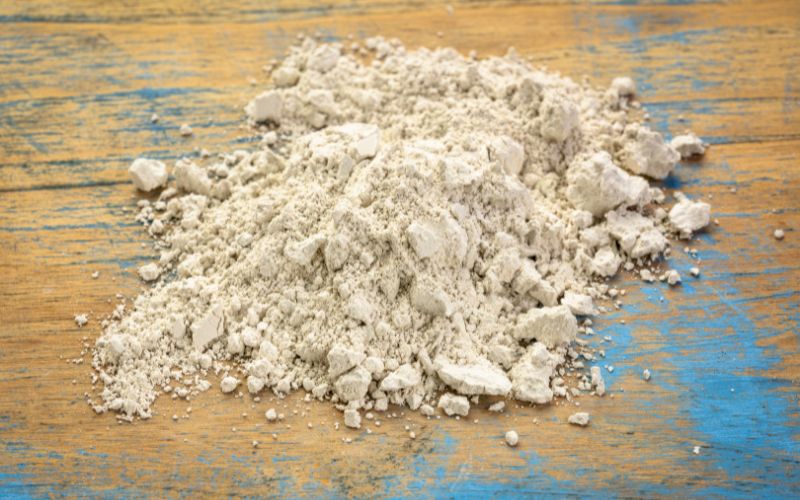
How to Use Diatomaceous Earth as an Ant Repellent
- Identify ant trails and entry points. Pay attention to where you see ants entering your home and the paths they take.
- Apply DE around entry points and along trails. Use a puffer or squeeze bottle to apply a thin layer of DE dust. You can also create a barrier around potential entry points like underneath doors, around windows, and along baseboards.
- Re-apply DE as needed. DE loses effectiveness when it gets wet, so you will need to reapply it after rain or heavy cleaning.
Number 9: Peppermint as an Ant Repellent
Peppermint oil is a popular natural remedy for repelling ants. The strong, minty scent that we find pleasant is actually quite repulsive to ants. Here’s how it works:
- Disrupts communication: Peppermint oil masks the pheromone trails that ants use to communicate and navigate. Without these trails, ants become confused and disoriented, making them less likely to venture into areas where they smell peppermint.
- Irritant: The menthol in peppermint oil can irritate ants’ feet and antennae, making them want to flee the area.
Number 10: Tea Tree Oil
Tea tree oil can be a somewhat effective ant repellent. The strong scent of tea tree oil is unpleasant to ants, and it can disrupt their pheromone trails, making it difficult for them to find food and communicate with each other.

Here’s how to use tea tree oil as an ant repellent:
- Mix 5-10 drops of tea tree oil with 2 cups of water in a spray bottle.
- Shake well and spray around entry points, ant trails, and areas where you’ve seen ants.
- You can also soak cotton balls in the mixture and place them around your home where ants are a problem.
🔴Keep in mind that:
- Tea tree oil may not repel all species of ants.
- The repellent effect of tea tree oil is not long-lasting. You will need to reapply it every few days.
- Tea tree oil can irritate skin and eyes, so be sure to dilute it properly and avoid contact with your skin and eyes. Tea tree oil can also be toxic to pets, so be sure to keep it out of their reach.
Number 11: Boiling Water an Ant Killer
Boiling water can kill ants on contact, but it’s not a great long-term repellent. Here’s why:
- Limited reach: Boiling water only kills the ants it directly touches. It won’t reach the queen or deep tunnels in the nest.
- Doesn’t deter: Ants leave scent trails to guide others. Boiling water might disrupt the trail temporarily, but it won’t stop them from finding a new way in.
Number 12: Cornstarch as an Ant Killer
To deter ants with cornstarch, sprinkle it liberally around entry points like cracks or wherever you see them. This disrupts their communication trails. Reapply often, especially after cleaning or if it gets wet. You can also try cleaning the area with soapy water first to remove existing trails for better results.


